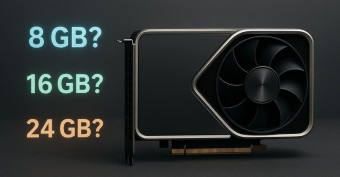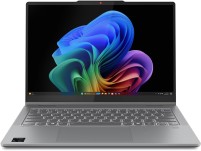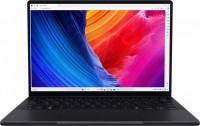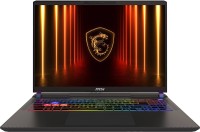How to choose a laptop?
We independently test the products and technologies that we recommend.

Laptop classification
First of all, you need to decide on the type of device. For constant carrying with you in a hip bag for men or a lady's handbag, a miniature 10 - 11-inch netbook is suitable, very cheap, but low-performance. If you need something as compact, but more powerful, look towards thin 11 - 14-inch ultrabooks. Due to the larger diagonal, you may no longer need a bag, but a backpack, but the weight of the device is still small - up to 1.5 kg. These fashionable metal or carbon fiber laptops are often also "long-playing", that is, capable of working without recharging for 8 hours or more.
Both netbooks and ultrabooks can be touch-screen convertibles (another name is "two-in-one") that can fold face up or completely detach the keyboard, thereby turning into a tablet. We also recommend reading the article “A tablet as a PC: is it possible to fully work on an iPad or Android?”.
If a big screen and high performance are more important to you than mobility, take a 15 or even 17-inch laptop. The cheapest models with low productivity are called office ones (in the common people - “typewriters” or “workhorses”). Mid-price models are called universal or multimedia, and flagship models are called gaming or, in rare cases, mobile workstations. Separately, dust, moisture and shock -proof laptops are distinguished, designed primarily for active tourism and work in difficult conditions (for example, in factories and construction).
Major manufacturers
The oldest global brands of Windows laptops are ASUS, Acer, Dell, Hewlett-Packard (HP) and Lenovo. In the ultrabook segment, Xiaomi and Huawei have recently been trying to impose competition on them. Gaming laptops are also manufactured by MSI. Do not forget about local brands specializing in the market of one or several neighboring countries, such as Prestigio. Aside, so to speak, outside the general competition, stands Apple with laptops running its own macOS operating system.
So what brand of laptops is the most functional and reliable? There is no exact answer to this question and cannot be. Each manufacturer has both successful and unsuccessful models. At the moment, Lenovo has the cheapest office laptops, and Acer has the most complete multimedia laptops. HP specializes in laptops with AMD processors, and ASUS specializes in metal ultrabooks. Dell is famous for its Alienware gaming series. But all this is just subjective judgments. You can read more about laptop manufacturing companies in the article "Sounding names: a comparison of the main lines of laptops from different brands".
Housing and screen
The most common laptop case material is plastic, usually matte, in rare cases glossy. Matte plastic is cheap and practical (slightly scratched), but relatively thick and weighty, and in case of a fall from a great height it can crack. Almost all of these shortcomings eliminates the metal, namely the aluminium-magnesium alloy. Mid-range laptops tend to be half metal, half plastic, while premium models are all-metal. The most expensive and rare laptop case material is carbon fiber - ultra-light and ultra-strong.
Laptop displays can also vary significantly. Types of liquid crystal matrices are represented by IPS and TN + Film - the first is bright, contrasting and with wide viewing angles, and the second is simply cheap. Also in HP laptops there are SVA matrices, but, unfortunately, unlike MVA, in terms of image quality they are closer to TN than to IPS.
 |
Formerly a standard for many years in laptops, HD resolution is gradually giving way to Full HD even in low-cost laptops. The increased resolution significantly improves the perception of the picture even on dim TN matrices, not to mention IPS. And premium ultrabooks and gaming laptops are increasingly using Quad HD (2K) and Ultra HD (4K) displays.
The standard laptop screen refresh rate, regardless of resolution and matrix type, is 60 Hz, but some gaming models boast a doubled 120 Hz frequency (the ability to display 120 FPS in games) and support for NVIDIA G-Sync technology, which eliminates image rendering defects in games. AMD's alternative development is called FreeSync.
Even with diagonals, not everything is clear. For example, modern ultrabooks with a 14-inch screen, thanks to the narrow bezels around the display, correspond in size to the 13-inch models of yesteryear. The screen cover can be matte or glossy, optionally with an anti-reflective coating and covered with tempered glass.
CPU
The choice of laptop processor brand comes down to Intel and AMD. Qualcomm is just planning to enter the new Windows laptop market, while VIA and Transmeta, which produced laptop processors in the 2000s, have ingloriously sunk into oblivion. But the lineup of both Intel and AMD is infinitely extensive: more than a dozen lines and generations for each of the companies.
Thus, low-cost processors are represented by dual-core Intel Celeron N and AMD E2, A4 and A6, as well as quad-core Intel Pentium N energy-efficient and passively cooled ApolloLake/GaminiLake architecture. The performance of all these chips is negligible, even the web browser on them noticeably slows down. Buying them makes sense only in the case of an extremely limited low-cost.
 |
Much faster and at the same time not much more expensive is the dual-core, four-threaded Pentium Gold (models 4405U and 4415U), which is in fact an economy version of the mid-priced Core i3 based on the powerful Skylake / Kaby Lake architecture, only with simplified integrated graphics and without little-used AVX instructions . Core i3 and Pentium Gold competitors are AMD A10, A12 and Ryzen 3. With a discrete graphics card on such laptops, you can not only work in complete comfort, but even play popular favorite WoT, CSGO and GTA 5.
The older Core i5 and Core i7 processors, which have four cores, eight threads and a high Turbo Boost frequency, are used in ultrabooks (for video editing) and gaming laptops. AMD responds to them with Ryzen 5 and Ryzen 7 chips with a similar number of cores - threads and integrated Vega graphics, much more powerful than Intel HD.
video card
Laptop video cards are built into the processor and discrete(in the form of a separate chip or board), and the first is not always worse than the second. For example, the integrated Intel Iris and AMD Vega are superior in gaming performance to the younger discrete GeForce 920MX and Radeon 530.
The minimum vidyuhi that allow you to run any modern game at least at 720p and low graphics settings are the GeForce MX150 and Radeon RX 540. For 1080p and medium-high settings, you will need a 4-gigabyte GeForce GTX 1050 or Radeon RX 560.
 |
In addition to games, the video card is used to speed up the work of many applications: antiviruses, photo and video editors, drawing and modeling programs. For the latter, specialized professional vidyuhi - NVIDIA Quadro and AMD FirePro are best suited.
RAM and disk subsystem
Four gigabytes of RAM is enough only for office tasks and old games (years before 2012), and even then, subject to the availability of a fast SSD, on which data will be cached in case of RAM overflow. The optimal amount is now 8 GB, but it is desirable that the second SO-DIMM slot remain free in the laptop for the future (see the article “Second wind: how to upgrade an old or low-power laptop?”). In turn, 12 - 16 GB is needed only for a gaming laptop with a GeForce GTX 1050 Ti or more powerful graphics card. But 32 and, moreover, 64 GB of RAM are currently overkill.
 |
Even mainstream laptops now have two storage slots: a 2.5-inch hard drive slot and an M.2 SSD slot. Some models are sold immediately with two discs. An alternative is hybrid SSHD, which combines a high-capacity HDD and a fast SSD cache in one drive to quickly launch frequently used applications. In netbooks, the SSD is often soldered into the motherboard in the form of an eMMC chip, which is why it cannot be replaced. But the DVD drive, once a mandatory attribute of any laptop, is now relatively rare.
 |
Final Choice
An inexpensive netbook or ultrabook is best suited for schoolchildren or students, but if the laptop is more often at home or in a dorm room, then you can take a classic 15-inch laptop (for the same money, the "stuffing" will be more powerful). You should focus on Pentium Gold, Core i3 or Ryzen 3 processors. Optionally, you can pay extra for a discrete graphics card. And if there is no Wi-Fi Internet in the educational institution, you should think about a 3G / LTE modem in advance.
For purely desktop (or sofa) home use, we recommend a universal multimedia laptop of 15 - 17 inches with a GeForce MX150 video card, and if the low-cost allows, a gaming laptop with a GTX 1050 or more powerful. When choosing a laptop for the office, in addition to the moderately productive Pentium Gold or Core i3 processor, you need to seriously ask yourself the question of a licensed operating system. Pre-installed Windows 10 will cost significantly less than sold separately.
For work in poor lighting conditions, there will be no unnecessary keyboard backlighting. At the same time, we categorically do not recommend working at a PC in the dark (see the article "5 tips on how to protect your eyesight when working at a computer"). And let the laptop serve you for a good five years without breaking or becoming obsolete!
Articles, reviews, useful tips
All materials
















































